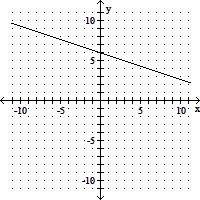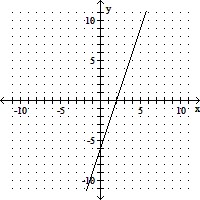Solve.The population of a city increased from 1,106,918 in 1995 to 1,359,774 in 2005. What is the percent of increase? Round your answer to the nearest tenth of a percent.
A. 22.8%
B. 1.9%
C. 2.3%
D. 18.6%
Answer: A
You might also like to view...
Find the Taylor polynomial of order 3 centered at 0.f(x) = 
A. p3(x) =  -
-  +
+  -
- 
B. p3(x) =  +
+  +
+  +
+ 
C. p3(x) =  +
+  +
+  +
+ 
D. p3(x) =  -
-  +
+  -
- 
Graph the function by plotting points.g(x) = -  x - 6
x - 6
A. 
B. 
C. 
D. 
Solve the problem.Under a certain apportionment method State X receives 51 seats and State Y receives 19 seats. Ten years later, the population of State X has increased by 3%, while the population of State Y remains unchanged. Under the same apportionment method, State X now receives 50 seats and State Y receives 20 seats. This is called
A. the population paradox. B. the Alabama paradox. C. the new states paradox. D. a violation of the quota rule. E. none of these
Write the whole number in standard form.Forty thousand, seven hundred fifty-one
A. 40,051 B. 40,751 C. 4751 D. 400,751